Gangtok is the capital of Sikkim and a beautiful hill station in north-east India. It was a popular Buddhist pilgrimage site since 1840 when Enchey Monastery was constructed and gained immense importance when Thutob Namgyal, the 9th Chogyal of Sikkim, shifted the capital here in 1894. The town is situated on a ridge that extends east to west at an altitude of 5400 ft to 5900 ft. The third-highest peak in the world, Mount Kanchenjunga, is visible on the west from the town on a clear day. Apart from being the main base for Sikkim Tourism, there are many places nearby you must see while in Gangtok. Here is a list of 14 best sightseeing places in Gangtok that no tourist should miss.

Gangtok Tourist Map
Rumtek Monastery
Rumtek Monastery is the largest monastery in Sikkim at present. Located 24 km from Gangtok, this monastery serves as the Karma Kagyu lineage’s main seat in Sikkim. This monastery was originally built under the direction of Changchub Dorje – 12th Karmapa in the mid-18th century. But when 16th Karmapa – Rangjung Rigpe Dorje arrived in Sikkim, this monastery was in ruins. With the help of Sikkim Royal Family, he rebuilt it and established it as the new seat in exile.
The monastery architecture looks like Tsurphu Monastery in Tibet, which serves as the traditional seat of Karmapa. The main building is a three-storied. The ground floor has a large prayer hall with old paintings, wall murals, thankas and statues. The first floor used to be the residence of 16th Karmapa and the top floor has a terrace and a small stupa. This monastery also houses one of the most precious possession of Karmapa – the Black Hat (known as the Vajra Mukut).
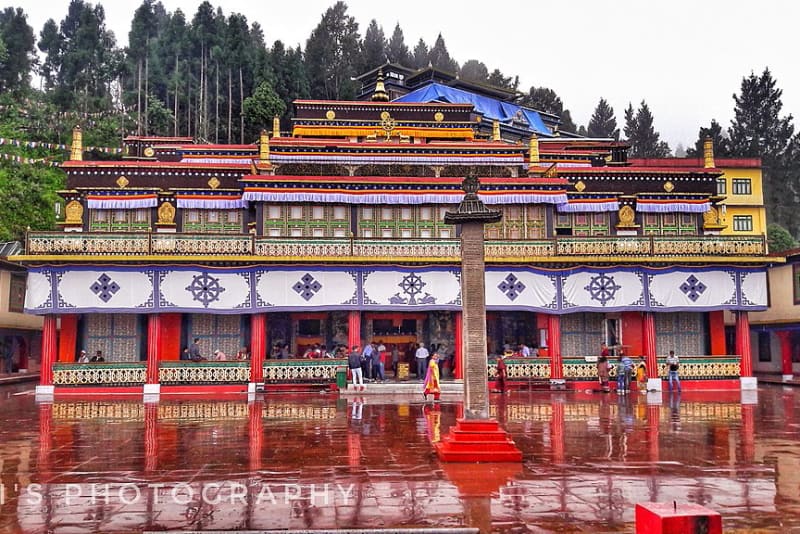
The monastery complex also has college inside – Karma Sri Nalanda Institute of Buddhist Studies which attracts students from around the world who spend at least none years here. Opposite the institute entrance, a small hall houses a four-metre high Golden Stupa which contains the precious relics of His Holiness the 16th Karmapa.
This monastery witnesses several Tibetan festivals organised throughout the year like Tse-chu in May / June and Losar celebration February / March.
Entry Time: 9 am – 6 pm
Entry Fee: ₹10
Banjhakri Waterfall
Banjhakri Waterfall and Energy Park is a popular attraction near Gangtok. It is situated at a distance of 7 km from the city, beside NH-31 which goes towards North Sikkim. The name Banjhakri literally means the forest of the jhakris (traditional shamanic healer who worships spirits living in caves around the falls).

The waterfall is 70 ft high and sourced from springs in higher reaches. The surrounding forest makes the water cascade look more beautiful. The energy park is spread over an area of 2 acres around the waterfall. A museum hall is curated by the Sikkim Rural Energy Development Agency (SREDA) that houses exhibits about renewable energy. The paved pathway and footbridges that go to the waterfall from the parking winding through the landscaped garden are decorated with ornamental trees and flowers.
Entry Time: 9 am – 6 pm
Entry Fee: ₹50
Ranka Monastery
Ranka Monastery is located 20 km away from Gangtok. This monastery is also known as Lingdum Monastery. This monastery is relatively new and does not has much historical significance. But this monastery is one of the most picturesque in India. That’s why it is frequently seen in several Bollywood movies.
Built-in 1998, Ranka Monastery follows the Zumang Kagyud lineage of Buddhism. The present Rinpoche is the 12th successive incarnation of this lineage. Forested mountains on all sides surround the monastery.
Unlike Rumtek, you do not need to walk uphill to reach there. The main entrance opens into a courtyard surrounded by a main building shaped like a pagoda in front and two-storied building in each side. The side buildings are classrooms for young lamas. The stairway from the courtyard leads to the prayer hall inside the main building. The prayer hall has a large golden Buddha statue inside with large paintings and thankas hanging from the walls.
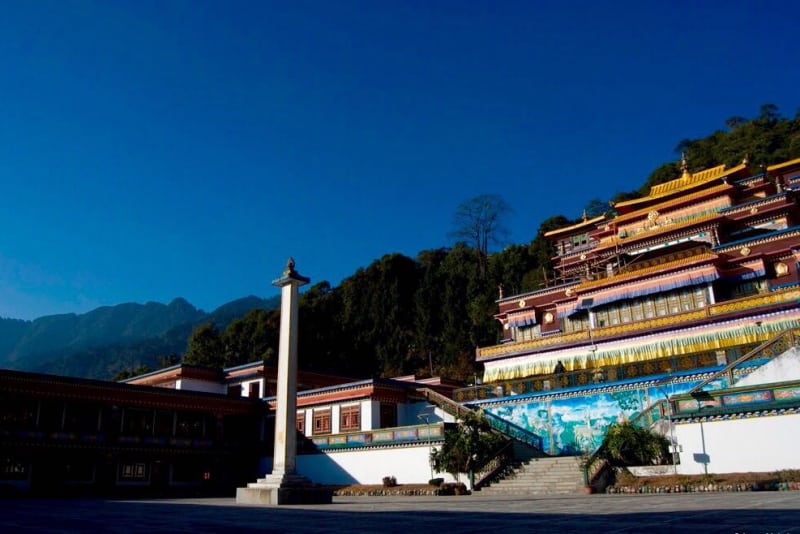
Behind the main building and up in the hill, there is a retreat centre where the lamas meditate. Near the parking, there is a small restaurant and a souvenir shop for tourists.
Entry Time: 6 am – 5 pm
Entry Fee: No
Gangtok Ropweway
The 1 km long ropeway (one way) is the prime attraction of Gangtok. The view of Gangtok town and the Kanchendzonga range on a clear day are breathtaking from the cable car. The double cable zig back ropeway can carry up to 24 people and often are full of tourists. So, you have to stand in a long queue before you get the opportunity.
The ride takes around 20 minutes, round trip. There are three stations en route – Deorali (lowest), Namnang (middle) nd Tashiling (upper). The cable car does not have any seating arrangement inside , so you have to enter first to stand beside the glass panel for a better view.
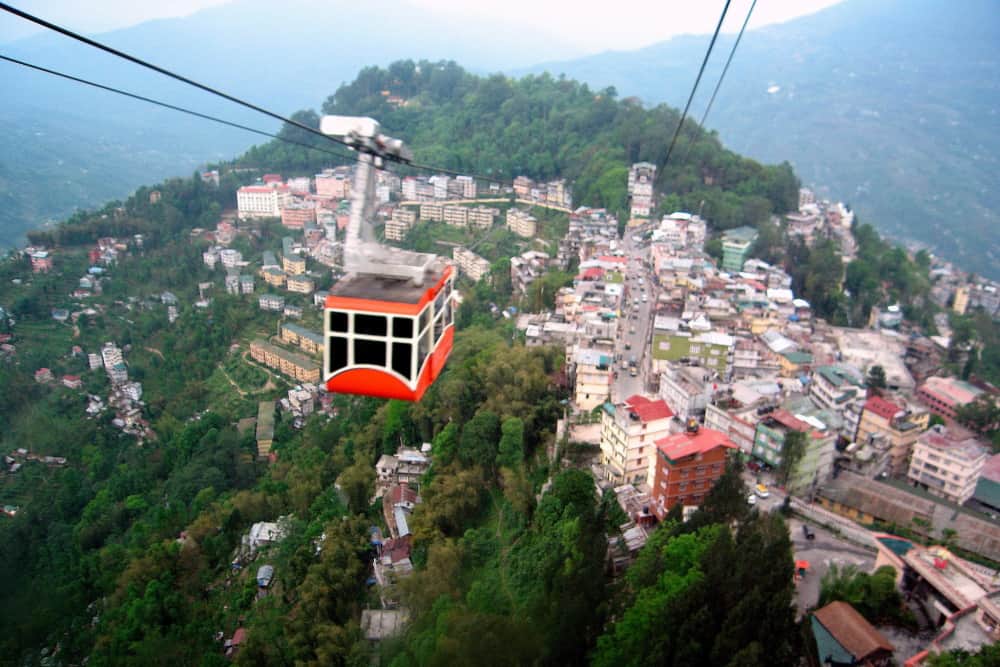
Entry Time: 9 am – 5 pm
Entry Fee:
- <3 years -No
- >3 years to <18 years – ₹77
- >18 years – ₹117
Tashi View Point
This viewpoint in Tashi offers a sweeping view of Kanchendzonga range on a clear day. To get the best view, you have to reach there before sunrise. This viewpoint which was originally built by King of Sikkim, Tashi Namgyal, is at a distance of 8 km from Gangtok SNT bus station
Although you have to climb many stairs to reach the viewpoint, the 360 views around worth the effort, there are a restaurant and a gift shop at the top. Binoculars and telescopes are also available against a nominal charge for a closer look of the mountain range.

Entry Time: 5 am – 6 pm
Entry Fee: No
Fee for binocular and telescope: ₹10
Hanuman Tok
Hanuman Tok is a Hindu temple situated at a distance 9 km from the town, dedicated to Lord Hanuman. The idol of Lord Hanuman was erected here in 1950 when an officer named Appaji Pant had a divine dream at this location. Now the temple is maintained by the 17 Mountain Division of the Indian Army.
The temple is atop a hill, and then there is a long flight of stairs from the parking. However, there are seating arrangements beside the stairs where devotees can rest and enjoy the view of the surrounding area at regular intervals.
The main temple has a large hall with many pictures of Lord Hanuman depicting his life. While its a Hindu temple, you will find many stupas and chortens around the temple. The architecture of the temple also has a Tibetan touch.
Entry Time: 7 am – 5 pm
Entry Fee: No
Ganesh Tok
Close to Tashi viewpoint, is The Ganesh Tok where a temple of Lord Ganesha is located. Located at an altitude of 6500 feet. It is situated on a hill with stairs climbing up from the parking to the temple. The platform adjacent to the temple offers a magnificent view of Gangtok town.
Entry Time: 6 am – 7 pm
Entry Fee: No
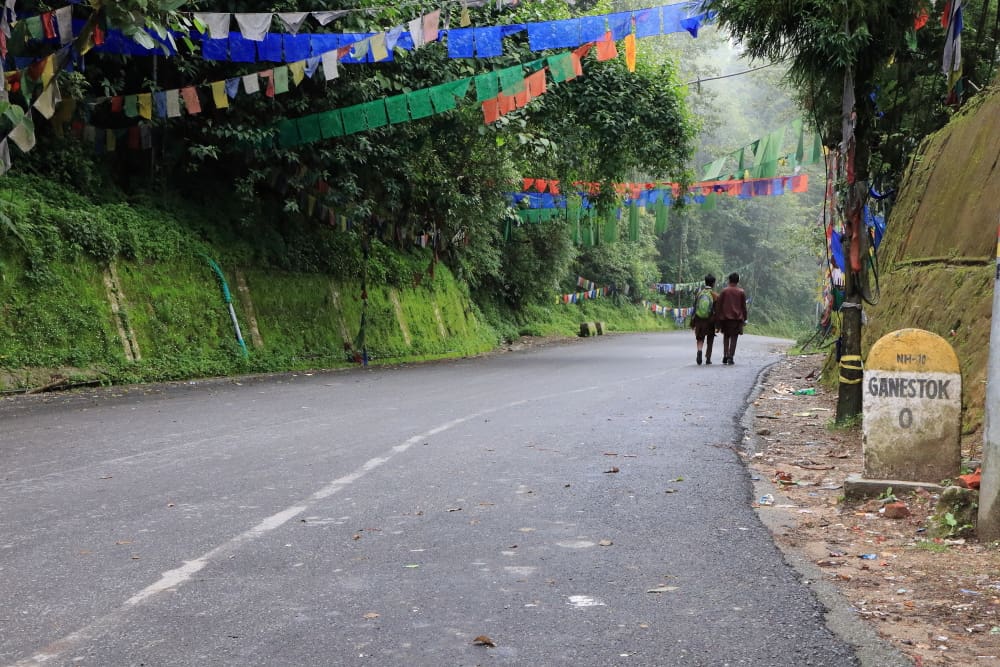
Namgyal Institute of Tibetology
Since its establishment in the year of 1958, the Namgyal Institute of Tibetology serves as the prominent centre for study and research of Tibetan history, religion, language, art and culture. The museum located on the ground floor houses religious statues, traditional art objects, thangkas and ancient manuscripts. The exhibition is dominated by a majestic silver image of Manjushri – the Bodhisattva of knowledge – that was brought from Tibet.
It is situated near Deorali, 2 km away from the main town surrounded by a small tree of birch, oak and magnolia trees. The foundation stone was laid by 14 the Dalai Lama in 1957 and Late Prime Minister Jawaharlal Nehru inaugurated the institute in 1958. There is a statue of Chogyal Palden Thondup Namgyal, the last king of Sikkim, at the main premises of the Institute.
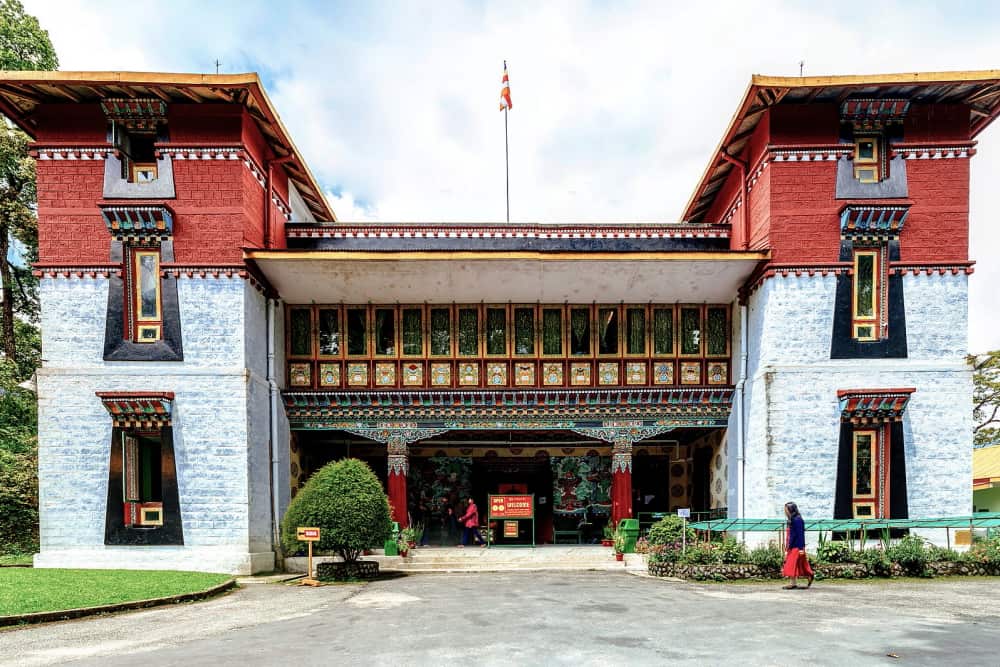
Entry Time: 10 am – 4 pm
Entry Fee: ₹10
Do Drul Chorten
Do Drul Corten is a large stupa on a hilltop near Namgyal Institute of Tibetology. It was built by a celebrated lama of Tibet Trulshik Rinpoche, invited by the Royal Family of Sikkim. The locals used to believe that evil spirits haunted this place. And this chorten was built to drive away all evil and pray for the well-being of the countrymen.
The deity enshrined on the top of this chorten is Dorjee Phurba or Vajra Kilaya. 108 prayer wheels surround the stupa. Following Trulshik Rinpoche’s death, another celebrated lama of Tibet came here and built his dharma preaching centre which can accommodate 700 lamas in the building. Tourists can visit the centre and offer prayers.
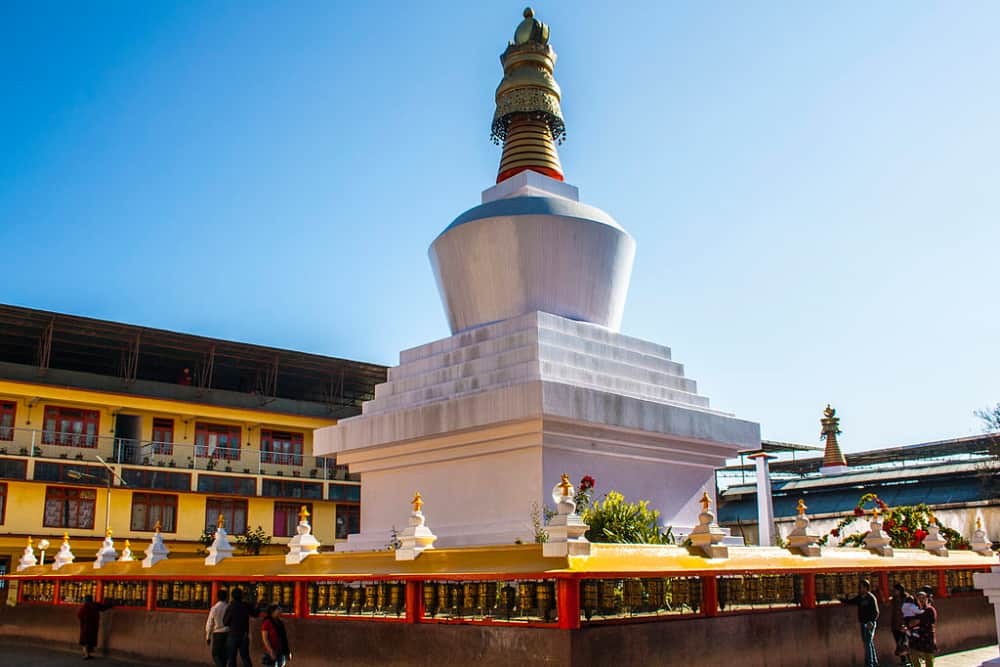
Entry Time: 8 am – 5 pm
Entry Fee: No
Bakthang Waterfall
This is a small waterfall situated beside NH10, approx 4 km from Gangtok town on the way to Tashi View Point. This waterfall has not a great fall, but the horizontal spread makes it very beautiful. The waterfall is fed by Ratey Chu that originates from a glacial lake at the height of 12500 ft above sea level.
There is a restaurant opposite the waterfall and many small souvenir shops selling local clothes, handbags, shawl and woollen items. But the main attraction for tourists is a small zip-lining facility that goes across and in front of the waterfall.
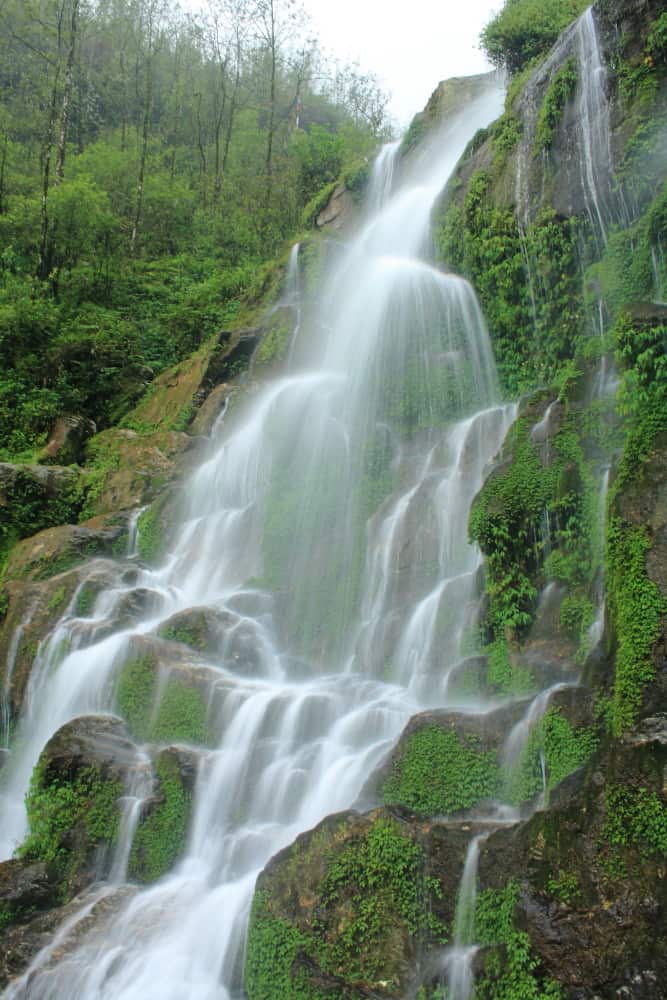
Entry Time: 6 am -6 pm
Entry Fee: No
Fee for zip-lining: ₹100
Enchey Monastery
Enchey Monastery, which is another old monastery near Gangtok, belongs to Nyingma order of Vajrayana Buddhism. The location was blessed by lama Drupthob Karpo who was believed to possess flying power and flew here from south Sikkim. The literal meaning of Enchey Monastery is “solitary monastery”. This monastery’s sacredness comes from the belief that Guru Padmasambhava had subdued the spirits of Kanchendzonga, Yabdean and Mahakala – the protective deities – here. This religious significance is deeply ingrained in every household of Gangtok.
It is believed that the old monastery was built by Drupthob Karpo nearly 200 years back and then rebuilt in 1909 by the 10th king of Sikkim – Sikyong Tulku. The main building of the shrine of the monastery is known as Lhakhang. It is two-storied with a golden top. Inside the main hall, there are statues of deities with a large statue of Padmasambhava. The walls of the hall are covered with paintings and frescos. There is a collection of religious books including some volumes of “Kangyur” kept in the cabinets engraved inside the walls.
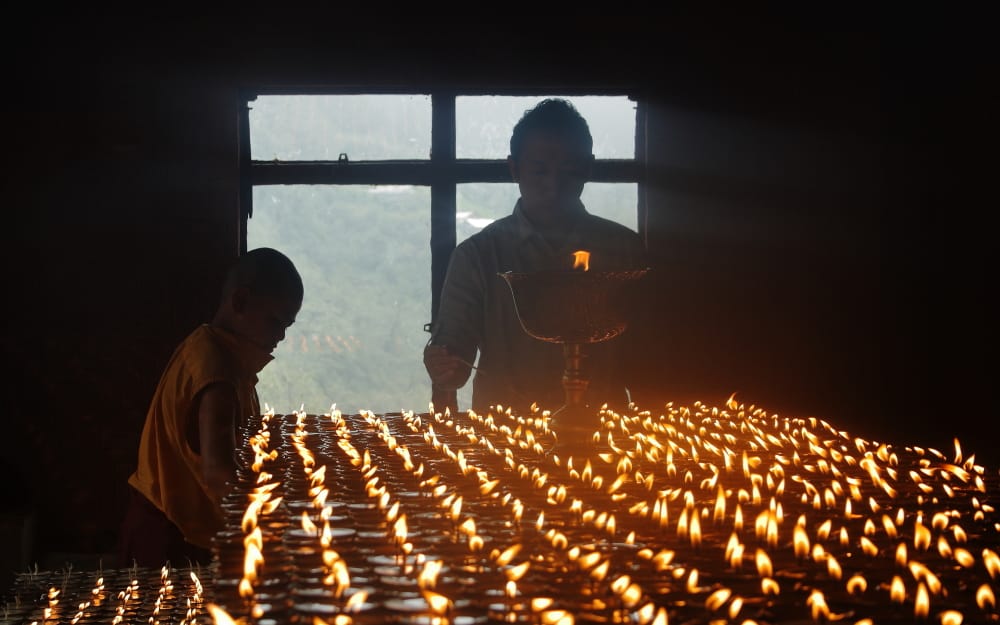
Entry Time: 6 am – 7 pm
Entry Fee: No
Saramsa Garden
It is a large garden near Ranipool approximately 10 km from Gangtok on Gangtok-Pakyong Road. This garden was originally built in 1922 to grow fruits for the Royal Family and British officers. During the second world war, a medicinal plant was harvested here – Ipecacuanha which was once used as an emetic. After the discontinuation of the use of Ipecac, many flowering plants were introduced here. Since then, it is popular as a flower garden among locals.
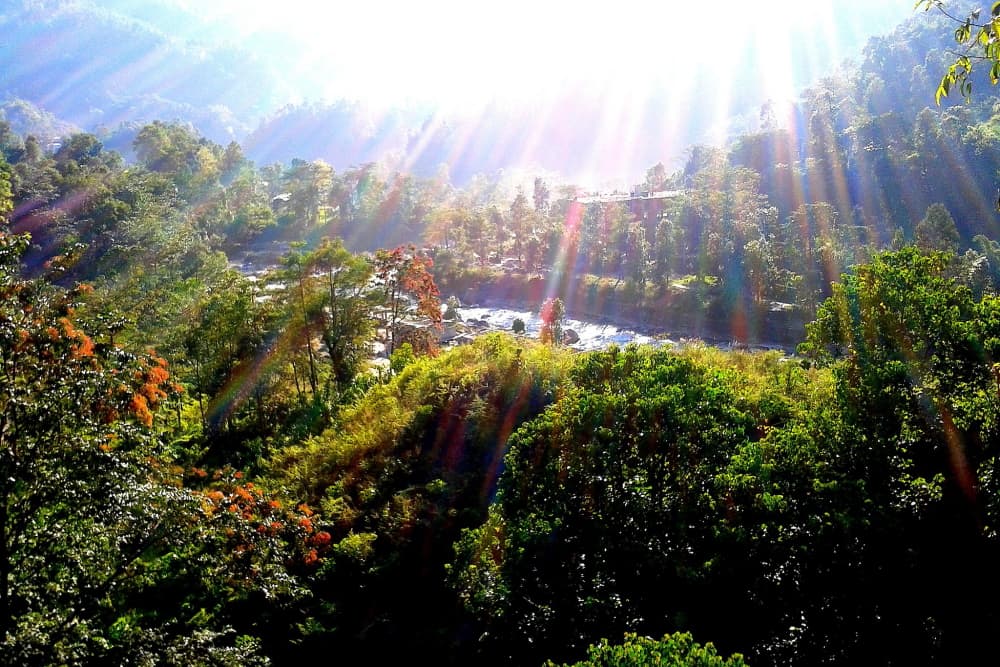
Entry Time: 8 am – 6 pm
Entry Fee: 10
Himalayan Zoological Park
Gangtok Zoo is situated at Bulbuley which is near Ganesh Tok and 6 km away from Gangtok Town. There is a wide collection of Himalayan and sub-Himalayan animals kept in their natural habitat. You can find animals like Red Panda, Himalayan Black Bear, Snow Leopard, Clouded Leopard, Palm Civet, Yak, Goral etc.
There is a 2.5 km long road that runs through the park. One can either walk or drive through this road. There is also a cafe and souvenir shop inside to make this place a perfect day-out with your kids.
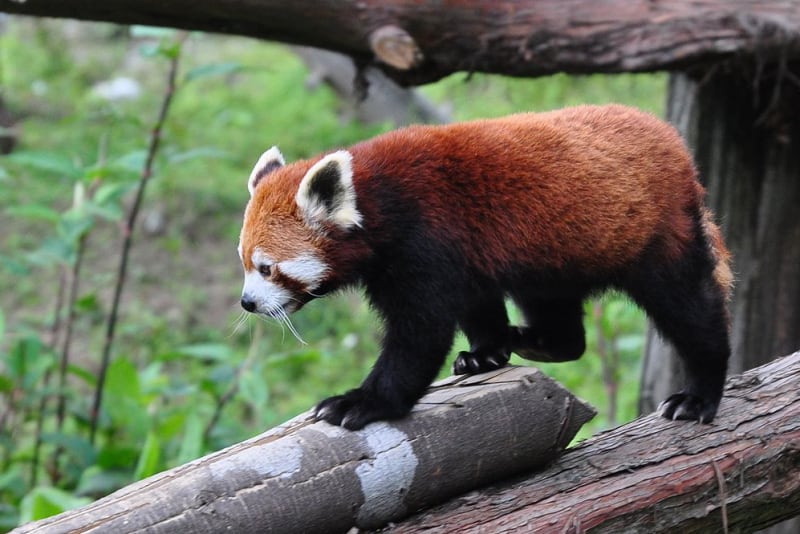
Entry Time: 9 am – 4 pm (except Thursday)
Entry Fee:
- ₹25 per adult
- ₹10 per child
- ₹40 per small car
- ₹100 per large car
M.G. Marg
M.G.Marg is Gangtok’s own little Mall Road. And the best time to visit the place is in the evening after you cover the other sightseeing points in Gangtok. This little stretch of the boulevard is lined by hotels, cafes, shops, restaurants and bars in both sides. The place is ideal for an evening stroll or to relax on a bench in the middle of the town’s most happening place—this 1km spit-free. Litter-free, vehicle-free zone with its carnival-like appearance will definitely help you to end your day on a high note.
Entry Time: Always, shops are open from 8 am -7 pm (except Tuesday)
Entry Fee: No
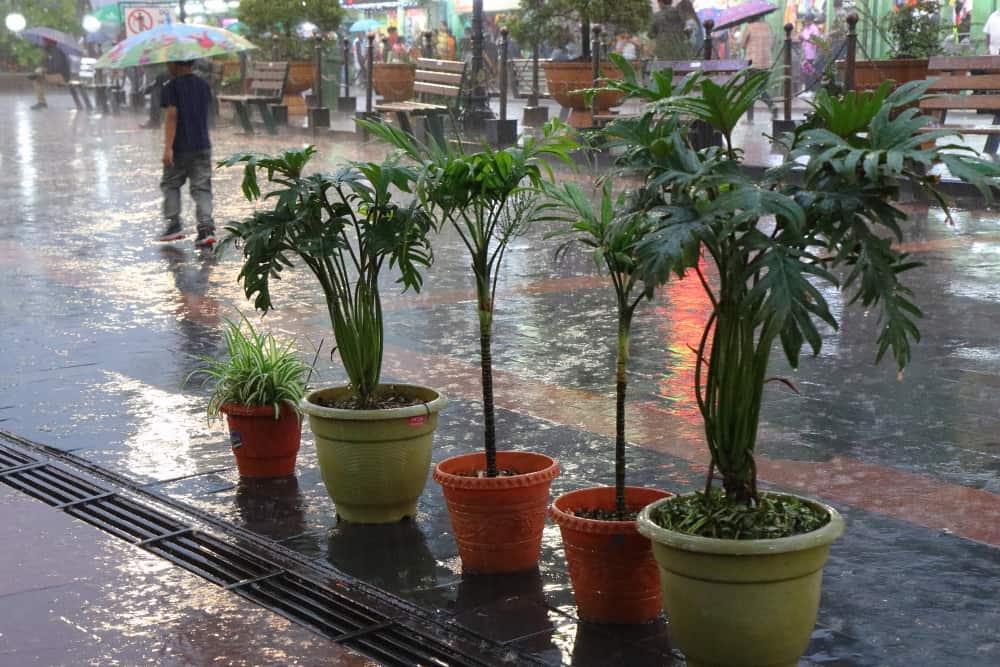
Pin it to read later!
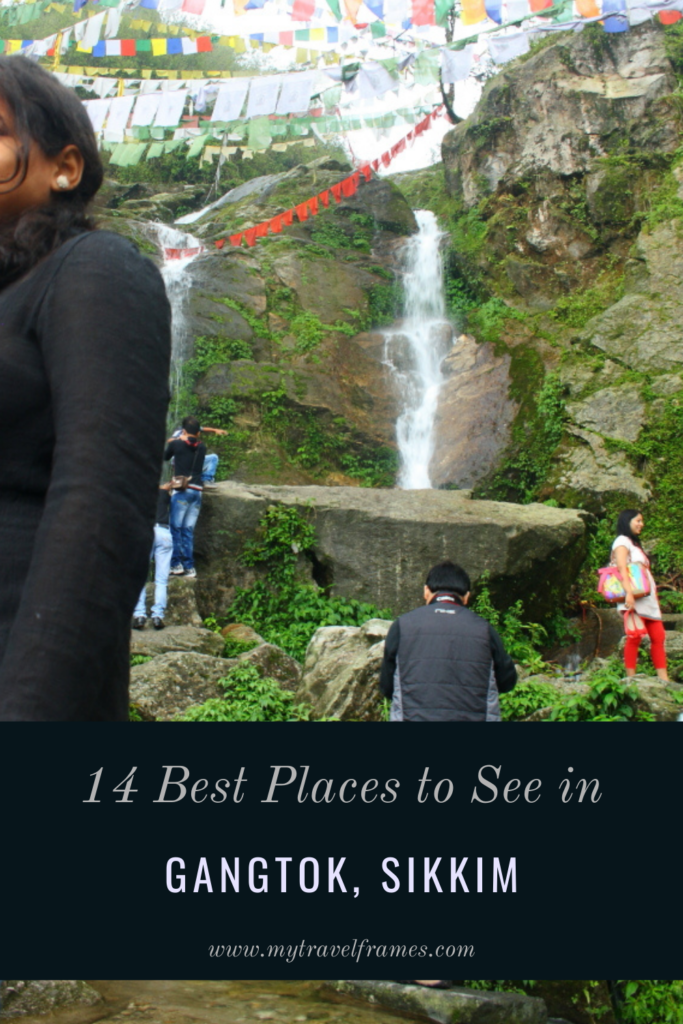

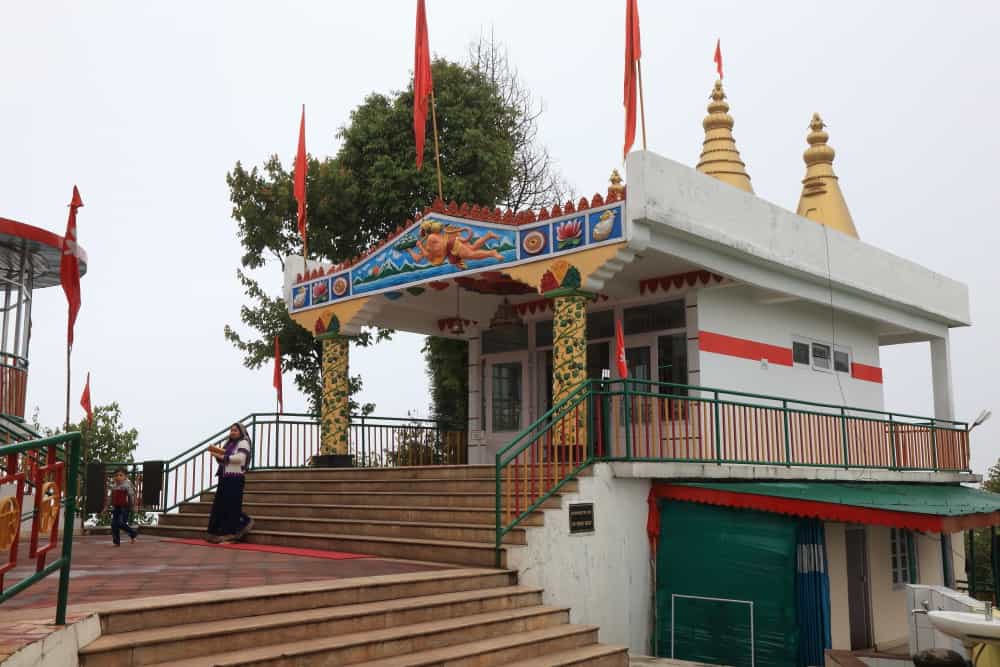
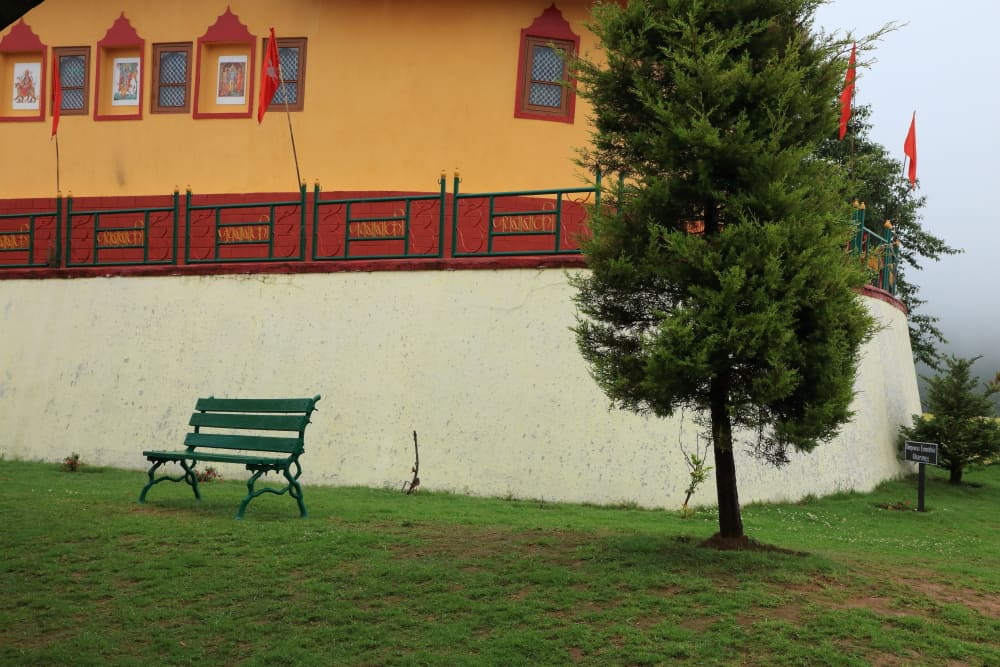
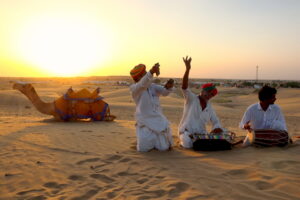
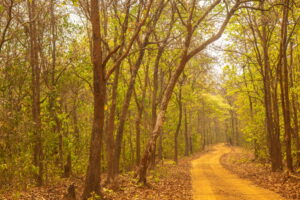
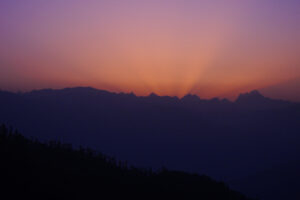
Pingback: North Sikkim Trip - Everything You Need To Know | A Complete Guide For First-time Travellers - My Travel Frames
Pingback: Why You Should Actually Visit Darjeeling in Monsoon - My Travel Frames